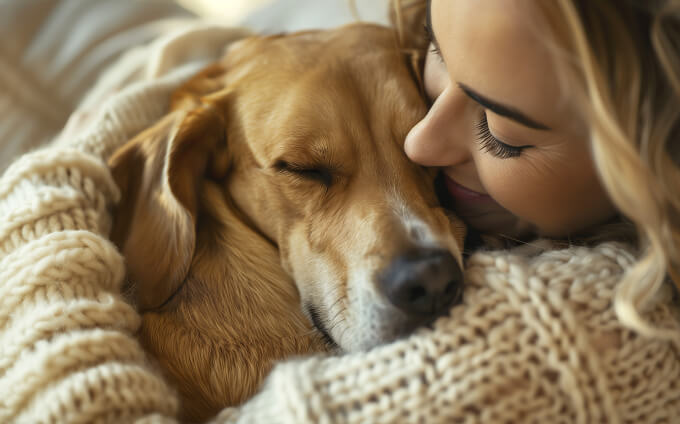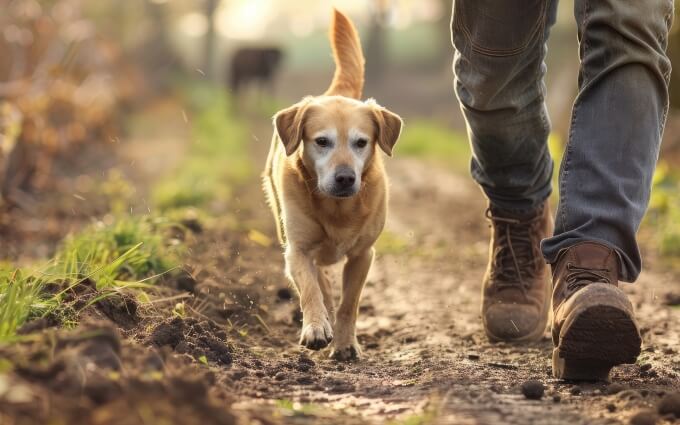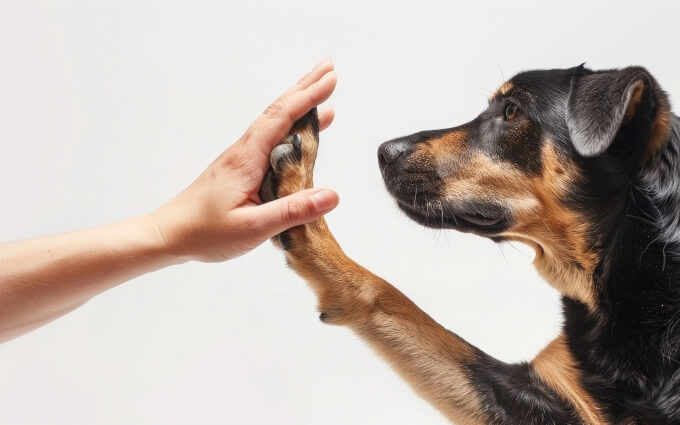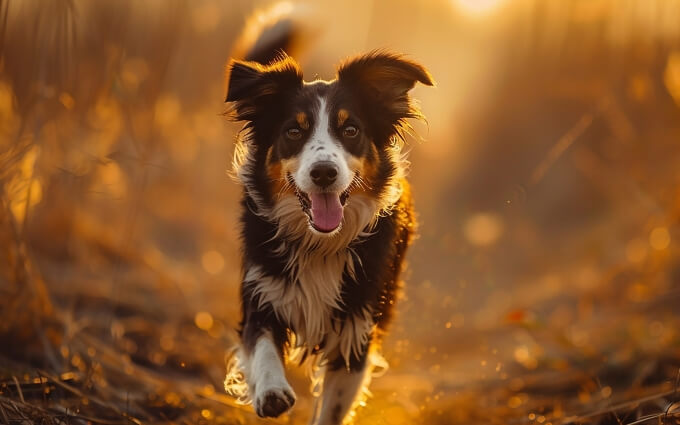- Home
- Dog health
- Which Emotions Do Dogs Actually Experience? Understanding Your Dog's Emotions
Which Emotions Do Dogs Actually Experience? Understanding Your Dog's Emotions
Dogs experience a variety of basic emotions similar to those of a young child. Learn about the emotions your dog truly feels, how they express them, and what it means for your relationship.

- 78

The Emotional Spectrum of Dogs: What They Really Feel
Ever wondered what's going on inside your dog's head? You're not alone. Science has come a long way in understanding the emotional lives of our furry friends. While dogs don't have the full emotional range of adult humans, they experience a variety of basic emotions similar to those of a toddler. This means that while your pup may not be plotting revenge or worrying about tomorrow's dinner, they do feel joy, fear, anger, and yes, even love.
Basic Emotions Dogs Experience
- Joy:Tail-wagging, zoomies, and that goofy grin - these are your dog's ways of showing pure joy, often in response to play, affection, or seeing a beloved human.
- Fear:Whether it's fireworks or a trip to the vet, fear is a common emotion that dogs express through behaviors like trembling, hiding, or excessive panting.
- Anger:Dogs can show anger, though it's often more about frustration or feeling threatened. This can manifest in growling, barking, or even snapping.
- Love:The bond between you and your dog is real. From cuddling to following you around, dogs express their affection through loyalty and physical closeness.
Beyond the Basics: Understanding the Limitations of Canine Emotions
As much as we love to imagine our dogs having complex emotional lives, their emotional range is somewhat limited. Unlike humans, who develop a wide array of complex emotions over time, dogs' emotional development peaks around six months of age, leaving them with a simpler emotional toolkit.
For example, while your dog might seem guilty when you scold them for chewing your favorite shoes, what they're actually feeling is fear of punishment rather than guilt. Dogs do not experience emotions like guilt, shame, or pride, as these require a level of self-awareness and understanding of social norms that dogs simply don't possess.
What This Means for You
Understanding these limitations is crucial for interpreting your dog's behavior correctly. Misinterpreting fear as guilt, for instance, can lead to ineffective training and unnecessary stress for your pup. Focus on positive reinforcement and clear communication to build a trusting relationship.
How Dogs Express Their Emotions: Reading the Signs
Unlike humans, dogs can't verbalize their feelings, but they communicate their emotions through body language and behavior. By learning to read these signs, you can better understand what your dog is experiencing and respond appropriately.
Common Emotional Signals in Dogs
- Excitement:Rapid tail wagging, jumping, and an inability to stay still are telltale signs of a very happy and excited dog.
- Fear and Anxiety:Signs include trembling, hiding, avoiding eye contact, and excessive licking or yawning.
- Contentment:A relaxed posture, soft eyes, and gentle tail wagging indicate a calm and happy dog.
- Aggression:Raised hackles, bared teeth, and a stiff posture are clear indicators that your dog feels threatened and may act out.
The Role of Oxytocin: Why Your Dog Loves You
One of the most fascinating discoveries in recent years is the role of oxytocin, the ‘love hormone,' in the relationship between dogs and their humans. When you cuddle, play, or even just gaze into your dog's eyes, oxytocin levels rise in both of you, reinforcing the bond you share.
This hormone not only strengthens the emotional connection but also plays a significant role in your dog's feelings of love and attachment. So, next time your dog looks at you with those big, loving eyes, know that it's more than just a look - it's a chemical reaction of love!
Empathy in Dogs: Do They Really Understand Your Feelings?
Dogs are remarkably attuned to human emotions, often mirroring our feelings in a process known as emotional contagion. This primitive form of empathy is why your dog may seem to comfort you when you're sad or get excited when you're happy. It's not that they understand the complexities of your emotional state, but they do sense the energy you're giving off and respond accordingly.
While this doesn't mean your dog is a mind reader, it does highlight the deep emotional connection that can form between humans and dogs, making them incredibly empathetic companions.
Practical Tips: Strengthening Your Emotional Bond with Your Dog
Understanding your dog's emotions is the first step in building a stronger, more empathetic relationship. Here are some tips to deepen your bond:
- Spend Quality Time:Engage in activities your dog loves, like playing fetch, going for walks, or simply lounging together.
- Positive Reinforcement:Reward good behavior with treats and praise to create positive associations and strengthen trust.
- Be Patient and Observant:Learn to read your dog's body language and respond to their emotional needs, whether it's providing comfort during a thunderstorm or space when they're feeling anxious.
- Maintain Consistency:Dogs thrive on routine and predictability, which helps them feel secure and emotionally stable.
By paying attention to your dog's emotional cues and responding with love and understanding, you'll not only enhance their well-being but also enrich the bond you share.
Frequently Asked Questions about dog emotions
What emotions can dogs feel?
Dogs can experience emotions like joy, fear, anger, affection, and anxiety, similar to young children.
Do dogs feel love for their owners?
Yes, dogs bond deeply with their owners and show love through behaviors like tail wagging, cuddling, and following them around.
Can dogs feel sadness or grief?
Yes, dogs can feel sadness and even grieve when they lose a companion or experience major changes.
Do dogs get jealous?
Dogs can show jealousy when their owner gives attention to another pet or person, often by seeking attention themselves.
Can dogs sense their owner's emotions?
Yes, dogs are very sensitive to human emotions and often mirror or react to their owner's mood.
- 78
 Cassandra Dalgaard
Cassandra Dalgaard
Cassandra is an energetic dog owner who loves spending time outdoors with her 4-year-old German Shepherd, Max. They can often be found hiking in the woods, where Cassandra enjoys nature and Max explores his surroundings with great curiosity. Cassandra trains Max in tracking, an activity they both find very rewarding. In the evenings they relax at home, where Cassandra often reads a book while Max lies at her feet. Cassandra also volunteers at a local dog club where she helps organize training sessions and social events for dogs and their owners. For Cassandra, Max is more than just a dog - he's her best friend and faithful companion.
-
Dog Behavior
 Does My Dog Know I Care About It?
Does My Dog Know I Care About It?Discover the ways your dog shows it knows you care and how you can reinforce that loving bond through simple actions and daily interactions.
 Cassandra DalgaardAug 05, 202444
Cassandra DalgaardAug 05, 202444 -
Food & Nutrition
 The Best Foods to Boost Your Dog's Immune System
The Best Foods to Boost Your Dog's Immune SystemTo keep your dog healthy and resilient, fueling their immune system with the right foods is key. In this post, we'll cover the top nutrient-packed foods that can give your dog's immune system the support it needs, helping them fend off illness and stay energetic.
 Marcin SolgaardOct 04, 20249
Marcin SolgaardOct 04, 20249 -
Tips & Tricks
 How to Train Your Dog to Walk Off-Leash
How to Train Your Dog to Walk Off-LeashThis guide will walk you through everything you need to know, from essential commands to mastering off-leash walks even in distracting environments
 Marcin SolgaardJul 02, 202451
Marcin SolgaardJul 02, 202451 -
Puppies & Young dogs
 How to Puppy-Proof Your Home: A Complete Guide
How to Puppy-Proof Your Home: A Complete GuideBringing a new puppy home is thrilling, but keeping them safe means some serious puppy-proofing. This guide covers everything from securing hazardous items to creating a puppy-friendly zone, making your home a safe haven for your curious new companion.
 Michelle TorringOct 10, 202412
Michelle TorringOct 10, 202412 -
Dog Behavior
 Why Does My Dog Put Its Head on Me? Understanding the Behavior
Why Does My Dog Put Its Head on Me? Understanding the BehaviorEver wondered why your dog puts its head on you? This guide dives into the reasons behind this endearing behavior, from seeking comfort to showing love.
 Michelle TorringAug 03, 202428
Michelle TorringAug 03, 202428 -
Tips & Tricks
 How to Train Your Dog to Give Paw
How to Train Your Dog to Give PawTeaching your dog to give paw is a fun and rewarding experience that strengthens your bond. This guide walks you through the process with tips, tricks, and plenty of paw-sitive reinforcement.
 Marcin SolgaardApr 11, 202441
Marcin SolgaardApr 11, 202441 -
Tips & Tricks
 How to Teach Your Dog to Come When Called
How to Teach Your Dog to Come When CalledThis guide walks you through the process, from selecting the right command to dealing with distractions, ensuring a strong recall every time.
 Marcin SolgaardJul 10, 202448
Marcin SolgaardJul 10, 202448 -
Dog Behavior
 Why Your Dog Ignores You and How to Change It
Why Your Dog Ignores You and How to Change ItIs your dog ignoring you? Explore the reasons behind this behavior and actionable steps to bring back the focus, from training techniques to environmental adjustments.
 Marcin SolgaardJul 16, 202439
Marcin SolgaardJul 16, 202439 -
Food & Nutrition
 How to Choose the Right Diet for Your Allergic Dog
How to Choose the Right Diet for Your Allergic DogFind out how to select the perfect diet for your dog with allergies. Learn about elimination diets, hypoallergenic foods, and the best ingredients to keep your furry friend healthy and happy.
 Marcin SolgaardJun 09, 202427
Marcin SolgaardJun 09, 202427 -
Dog health
 Are Dogs Really Color Blind? The Truth About Canine Vision
Are Dogs Really Color Blind? The Truth About Canine VisionDiscover how dogs see the world, what colors they can perceive, and the science behind their unique vision. This blog post delves into the myth of dogs being color blind and explains their actual color perception.
 Marcin SolgaardMay 26, 202433
Marcin SolgaardMay 26, 202433










